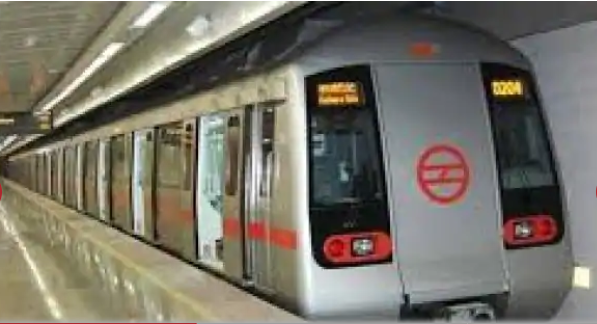The Metro, which started its operations for the first time in Delhi on 25 December 2002, has learned to upgrade itself as it gets younger. After starting the journey in the driverless metro in the 18th year, now the Delhi Metro is going to upgrade itself again in the second decade of its operation i.e. in the 20th year. Virtual signaling is starting to operate with cashless ticketing for unhindered travel. Also, in the 20th year of operation, for the first time in the metro, the signaling prepared on Indian technology is being operated.
Token, smart card will be needed
In the 20th year of metro operation, not only Delhiites but also commuters coming from any part of the country will neither need to buy smart cards or tokens nor recharge them to travel in the metro. Passengers will be able to enjoy cashless travel under One Nation One Card. For this, apart from the bank’s debit or credit card, they will need mobile only.
According to Delhi Metro Managing Director Mangu Singh, we have completed most of the work on this. The National Common Mobility Card scheme will be implemented on all metro lines within the next one year. After that, travel in Delhi can also be done with the Metro smart card of another state.
The speed will not decrease even after the fault in the virtual signaling
Technical fault in signaling in Delhi Metro affects its operation the most. Now Metro has solved that too. Metro has started using virtual signaling. In the first phase, it has been started on the Blue Line, so that virtual signaling will not affect the speed of the metro after a fault in any one section. That is, the operation of the metro can be normalized on the rest of the line. It will now be implemented on other lines including Yellow Line (Samayapur Badli to Gurugram), Red Line (Dilshad Garden to Rithala) and Violet Line (Kashmere Gate to Faridabad).
Use of indigenous signaling system
For the first time in its 20th year of metro operation, the Delhi Metro has run on India’s ready-made signaling system (Indian-Automated Train Monitoring). On its 20th year of operation, it was launched by Union Urban Development Secretary Durga Shankar Mishra and Metro Managing Director Mangu Singh on Friday. This trial has been done on the first operational Red Line of Metro (Rithala to Dilshad Garden).
Right now the signaling system of Delhi Metro was prepared by foreign companies. Delhi Metro has developed this technology in association with BEL (Bharat Electrical Limited). After a long trial, now its use has started for the first time from the 20th year of operation on the Red Line.
For the first time in Covid, the speed stopped for six months
Before reaching the 20th year of metro operation, the speed of the metro was braked several times due to technical glitches but it was for a few minutes. However, due to the Covid epidemic, for the first time after the first day of operation, in 2020, the operation of the metro remained closed for about six months. Metro Managing Director Mangu Singh says that these were among the most challenging days in the history of 20 years. Because the metro was closed for the public in Covid, but its maintenance, the whole system had to be kept running. So we can consider it as one of the big challenges of these 20 years.


